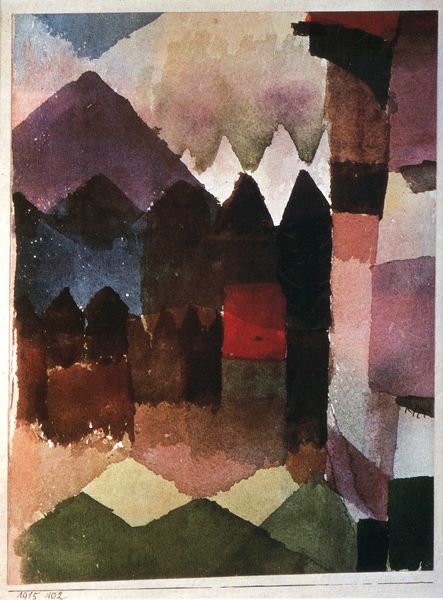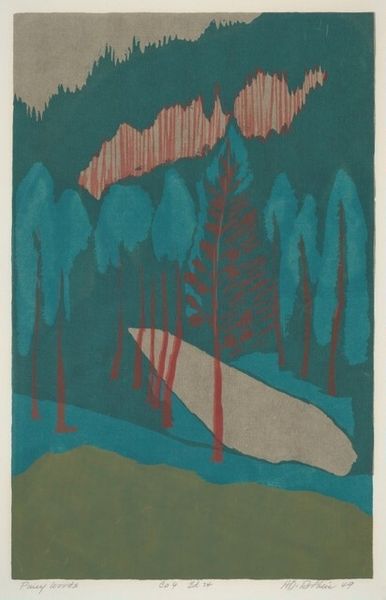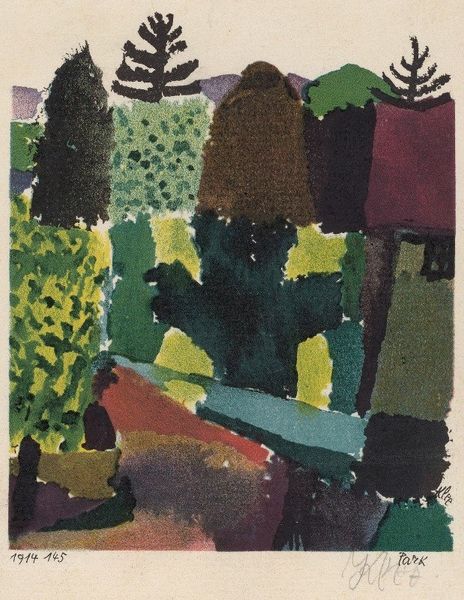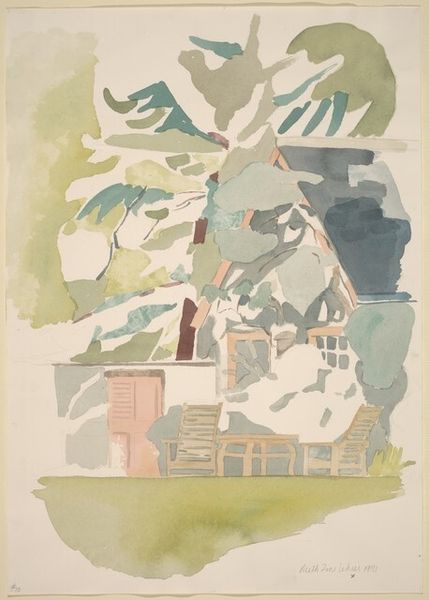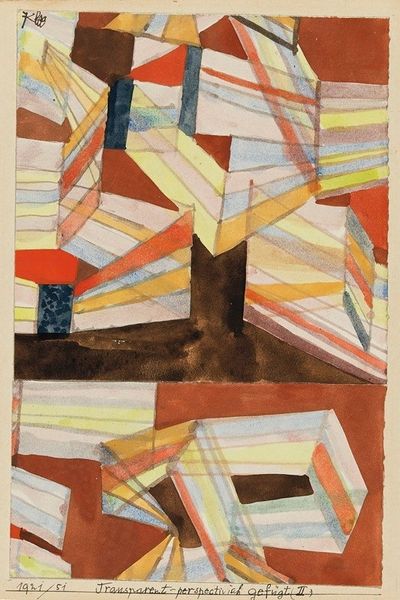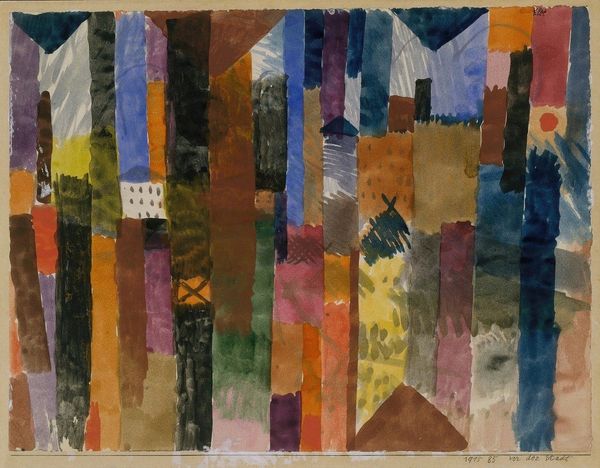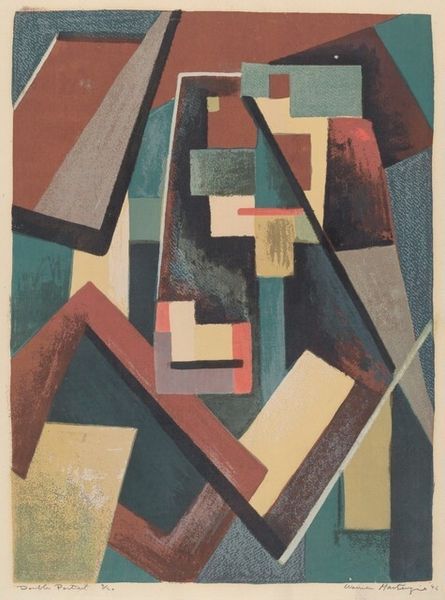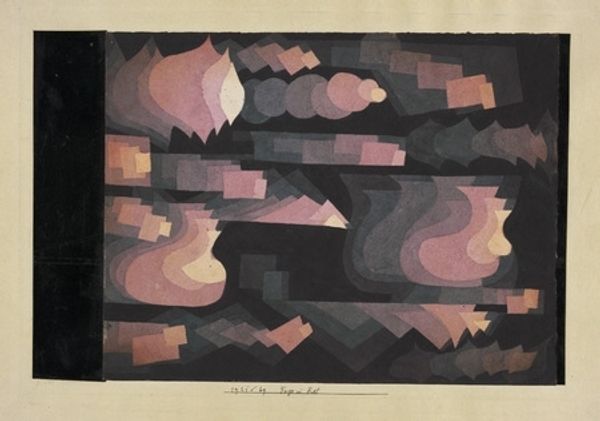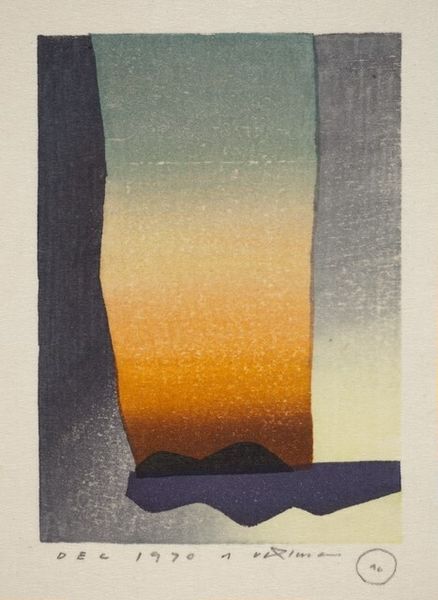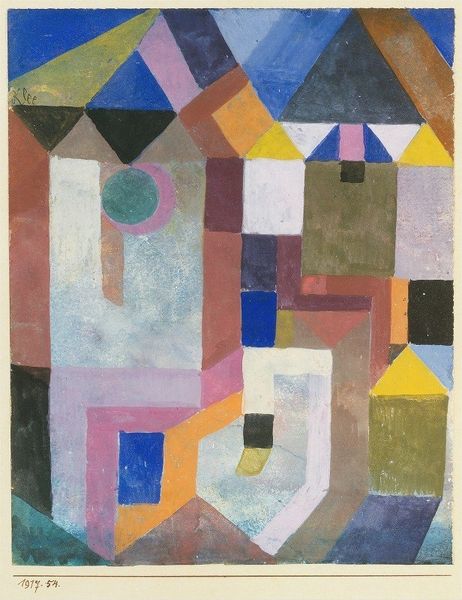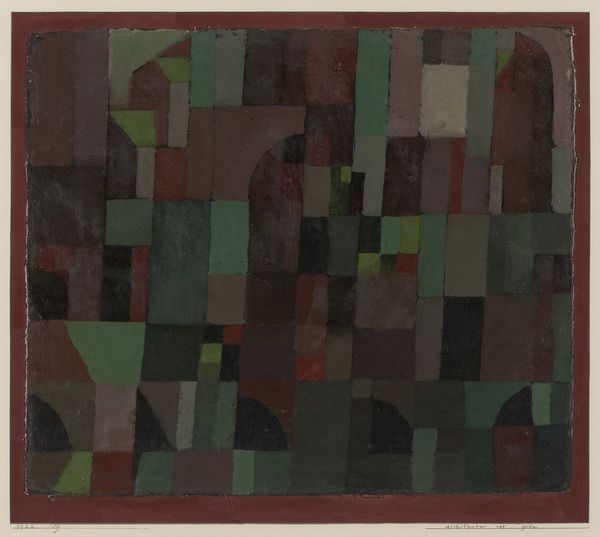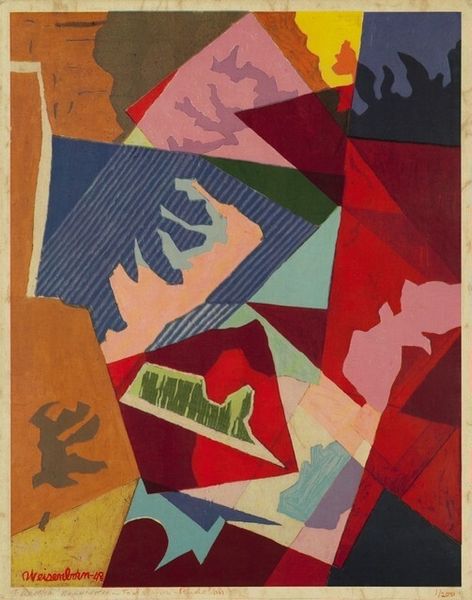
mixed-media, painting, paper, watercolor
#
mixed-media
#
painting
#
landscape
#
paper
#
abstract
#
watercolor
#
expressionism
#
geometric-abstraction
#
mixed medium
#
mixed media
#
modernism
#
watercolor
Copyright: Public Domain: Artvee
Curator: This is Paul Klee's "Föhn im Marc’schen Garten," created in 1915. It’s a mixed-media piece, primarily watercolor, on paper. What are your first impressions? Editor: Well, the geometric shapes immediately strike me. The cool blues and greens evoke a tranquil yet slightly somber mood. It’s almost like looking at a simplified landscape through a fractured lens. Curator: Klee was deeply invested in the relationship between materials and representation. He layers watercolor washes to achieve this sense of depth. How do you think the application of this technique impacts its reception by a contemporary audience? Editor: I'm captivated by how Klee's technique serves a historical purpose here. The use of watercolor provides the work a translucency. In 1915, at the onset of the war, the world was in crisis. It seems Klee used translucent geometric forms in a garden setting to explore human resilience in times of rapid, traumatic transformation. Curator: Precisely. The way he blends the pigments creates a sense of spatial ambiguity. Notice also how the title references "föhn," a warm, dry wind, creating an irony. But beyond symbolism, think about the actual production: paper, pigments, brushstrokes, Klee’s studio… these are all tangible elements of its creation and our appreciation. Editor: Right, the studio matters. Considering the context – 1915, the rise of expressionism, the horrors of World War I. Gardens, historically places of contemplation and retreat, acquired new sociopolitical meanings. This painting speaks of that complex interrelationship. But it's difficult to talk about its location due to missing location data. Curator: Absolutely, understanding the interplay between his techniques, choices of materials, and societal upheavals shapes our appreciation. It pushes us beyond mere aesthetics, reminding us of the concrete circumstances of its making. Editor: Agreed, and looking at it now, through a historical lens, highlights its function within early 20th-century avant-garde movements and sheds light on broader artistic trends and institutional display of such trends, it deepens the experience of seeing and understanding art today.
Comments
No comments
Be the first to comment and join the conversation on the ultimate creative platform.
